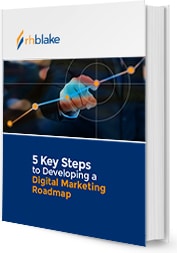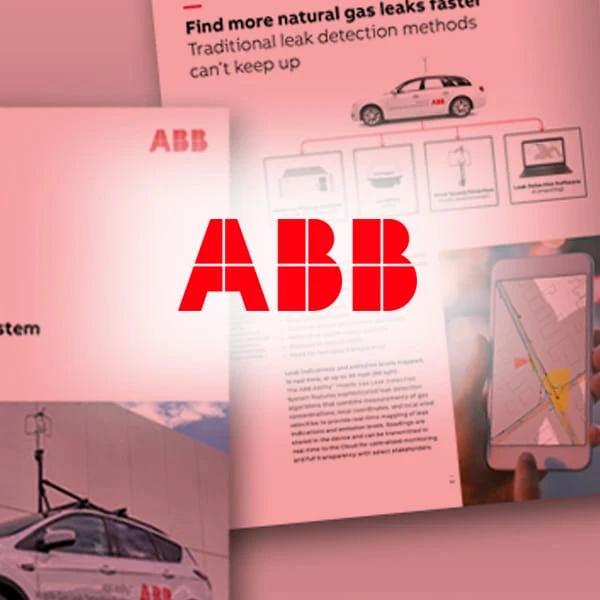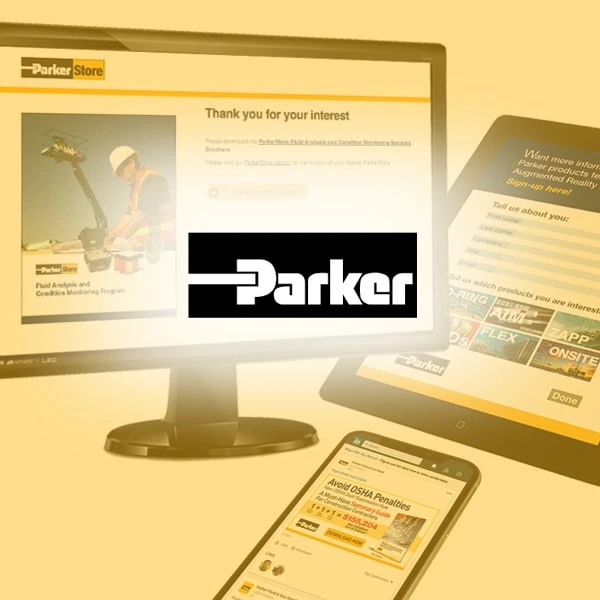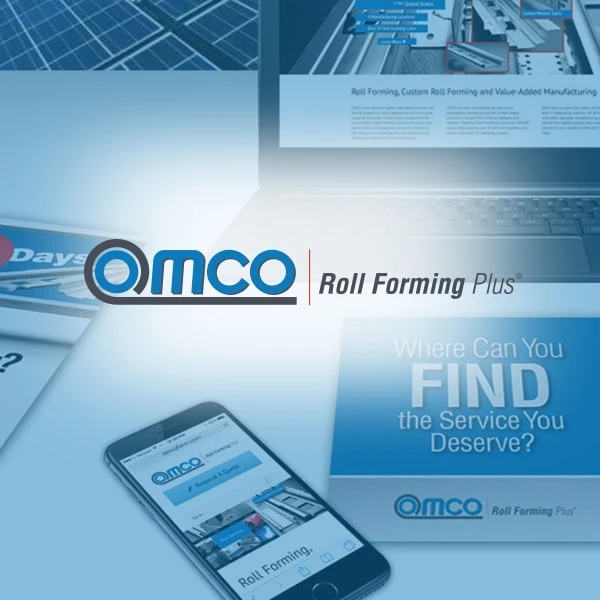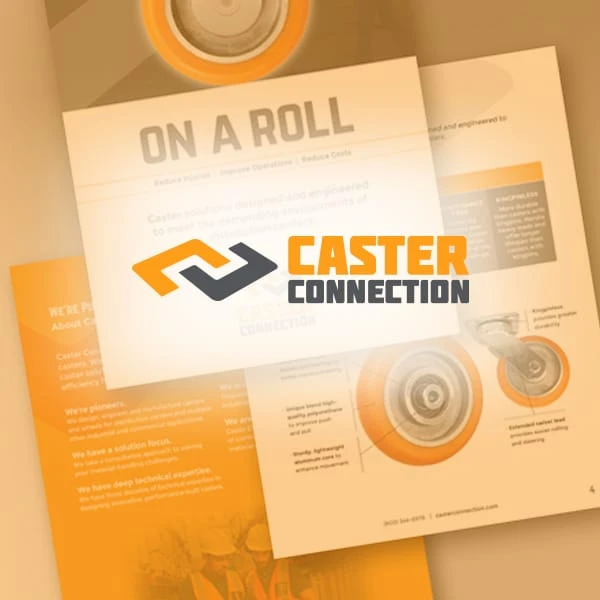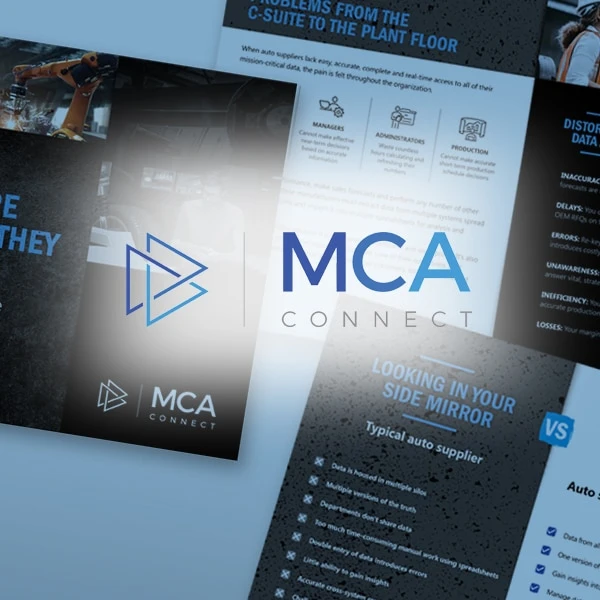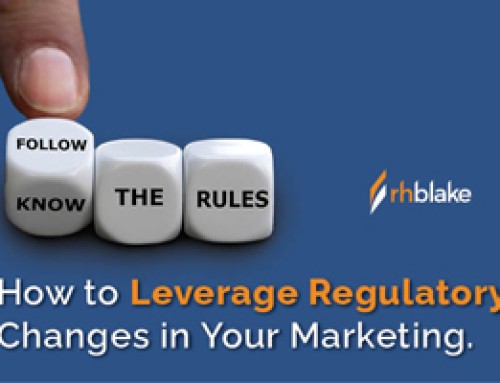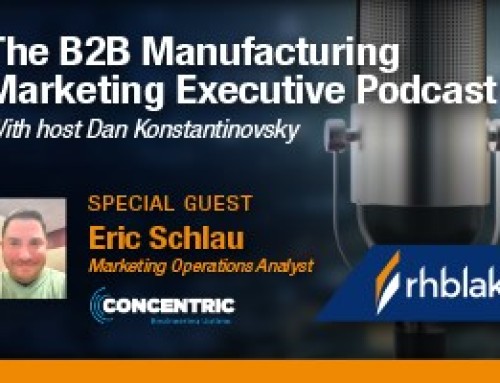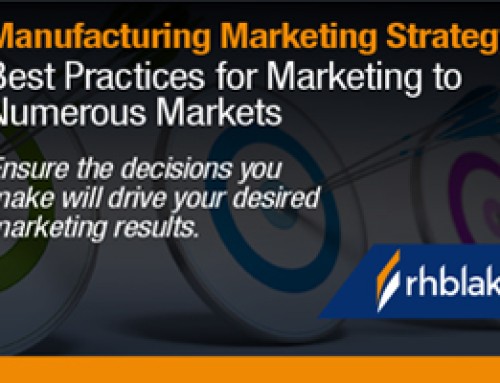Regulatory bodies in various industries—including the industrial manufacturing sector—regularly update compliance laws to protect consumers and guarantee fair competition among businesses.
How to Leverage Regulatory Changes in Your Marketing
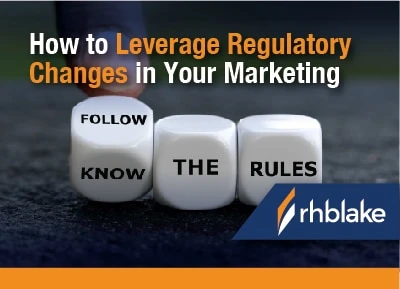
Regulatory bodies in various industries—including the industrial manufacturing sector—regularly update compliance laws to protect consumers and guarantee fair competition among businesses. While these changes typically mean more administrative work for end customers, they also present a marketing opportunity.
Regulatory changes are an opportunity because they give industrial manufacturers a way to differentiate themselves in the marketplace. They also present an opportunity for accelerating sales pipelines. In a staggering percentage of sales—often cited as 40 to 60%—prospects do nothing. Their complacency, their indecisiveness, sees a significant portion of the average salesperson’s pipeline evaporating into “no decision.” Regulatory changes disrupt this status quo by increasing the perceived risk for prospects who are inclined to do nothing. They now face the need to comply or face penalties.
As an industrial manufacturer, consider leveraging regulatory changes as compelling events in your marketing program. Turn regulatory challenges into a unique selling proposition that drives conversion and growth. Do this in three ways.
1. Know the industry
Your first step is to navigate the regulatory landscape by staying informed about both current regulations and anticipated changes. Subscribe to industry newsletters, attend conferences and engage with relevant regulatory bodies. Actively monitor updates from the regulatory agencies to remain knowledgeable about shifts impacting your offerings and customers’ needs.
Understanding the industry in which you operate equips you with the insights to anticipate market shifts, emerging trends and regulatory updates that affect operations and sales strategies. With a solid grasp of the regulatory landscape, you develop tailored solutions that resonate with customers’ needs while aligning with compliance requirements.
2. Weigh potential impact on customers
Not all legislation has the same level of impact on a business or its customers. Some regulations require significant investment in compliance efforts, such as updating infrastructure, training staff or changing workflows. Other regulations have a relatively minimal cost. This disparity in compliance costs influences a company’s willingness to act swiftly.
Non-compliance consequences—ranging from hefty fines to reputational damage—also vary. On the one hand, businesses that fail to meet crucial deadlines face increased scrutiny or penalties, amplifying the need to act. On the other hand, regulations that allow for more flexibility or phased compliance lead to a lack of immediate urgency, allowing some companies to delay action at their peril.
3. Incorporate these insights into your marketing program
Staying abreast of industry changes equips industrial manufacturers with critical insights into how regulations and market dynamics impact their customers. With these insights, you design targeted marketing programs that address specific customer pain points, highlight solutions and demonstrate how your offerings align with evolving regulations.
Educate your audience about relevant compliance issues
Effectively communicating non-compliance risks guides your audience through the evolving regulatory landscape. By providing clear, concise information on potential penalties and the impact on business operations, you empower customers to understand the gravity of adhering to new legislation.
In addition to highlighting risks, equip your audience with practical strategies for compliance. Offer resources that clarify the compliance process, breaking down complexities into actionable tasks. Lastly, be proactive about communicating deadlines. Create a timeline of key dates related to new regulations to enhance your customers’ understanding of when they must take action.
Position yourself as a helpful expert
As you educate your audience about regulatory changes, you establish yourself as an expert leader. Demonstrate your commitment to helping them navigate the complexities of regulatory compliance effectively. This proactive approach mitigates their risks and highlights how your product or service is integral in achieving compliance.
To accelerate pipeline velocity, emphasize your role as a partner rather than just a vendor. Use this partnership as a differentiator in a competitive market, showcasing how you offer tailored support beyond standard practices. Position your value proposition this way so that customers see your products not just as solutions but as critical tools for meeting their compliance goals.
Create marketing campaigns around compliance issues
The most effective way to leverage changes in regulations and compliance is with a dedicated marketing campaign. This campaign should announce the pending changes, describe how they affect companies in the industry, introduce products, services and solutions that help companies meet the new requirements, and in other ways position the brand as a strategic partner in helping companies attain and maintain compliance with the new regulations.
Every marketing campaign will be different, involving a different mix of content assets (whitepapers, factsheets, explainer videos, answers to FAQs, webpages, social posts, and more) and channels (website, YouTube, trade publications, LinkedIn, X, and more.
For every campaign, create dedicated resources focused on specific products, services, or compliance resources to provide targeted information that addresses the needs of your audience. RH Blake used this strategy with Parker Hannifin Corporation’s specialty hose for jackhammers, which addresses new OSHA safety requirements.
Consider the unique challenges that companies face in understanding the impact of pending regulatory changes, then create resources that address those challenges. RH Blake did this to good effect by creating a decision tree to help customers understand ABB’s EU NIS2 compliance solutions. Decision trees visually outline various decision paths, allowing users to see the ramifications of each choice in a clear and structured manner. They guide stakeholders in identifying the best course of action according to their unique circumstances by breaking down potential compliance scenarios into branches based on specific criteria.
Beyond the digital realm, RH Blake employed traditional channels such as trade show display development for Clark Reliance, Inc.’s compliance solutions for steam traps, boiler controls, liquid level gauges and valves, and sight flow indicators. This marketing strategy allowed for direct engagement with potential customers. The manufacturer was able to provide hands-on experience and valuable information on how they help comply with industry regulations.
RH Blake also worked with an industrial manufacturer to leverage changes in regulatory compliance by creating the “Cliff Notes” version of the legislation and using it as a lead generator. These short, simple and easy-to-digest summaries of complex regulations served as a valuable resource for busy professionals who need to stay updated on compliance requirements but do not have the time to read through lengthy legal documents.
The key to success is to create unique content assets that meet the unique needs of your target audiences. Sometimes you will need to create a whitepaper. Other times, your audiences will need an explainer video. And on still other occasions, you will need to create another type of content asset altogether. Match your messaging with the best assets for the needs of your target audiences and you will succeed.
Final thoughts
Regulatory changes are not obstacles but compelling events that industrial manufacturers and marketers should maximize to their advantage. Understand the industry’s intricacies and assess the potential impact of changes on your target audience. Weigh the specific challenges and opportunities that arise and craft marketing strategies that put these regulatory changes in the center.
RH Blake partners with industrial manufacturers to convert compliance complexities into compelling narratives highlighting a manufacturers’ expertise and value. Are you ready to position yourself as a trusted partner and empower yourself to establish lasting relationships in an ever-evolving regulatory landscape? Contact us.
Regulatory bodies in various industries—including the industrial manufacturing sector—regularly update compliance laws to protect consumers and guarantee fair competition among businesses.
How to Leverage Regulatory Changes in Your Marketing

Regulatory bodies in various industries—including the industrial manufacturing sector—regularly update compliance laws to protect consumers and guarantee fair competition among businesses. While these changes typically mean more administrative work for end customers, they also present a marketing opportunity.
Regulatory changes are an opportunity because they give industrial manufacturers a way to differentiate themselves in the marketplace. They also present an opportunity for accelerating sales pipelines. In a staggering percentage of sales—often cited as 40 to 60%—prospects do nothing. Their complacency, their indecisiveness, sees a significant portion of the average salesperson’s pipeline evaporating into “no decision.” Regulatory changes disrupt this status quo by increasing the perceived risk for prospects who are inclined to do nothing. They now face the need to comply or face penalties.
As an industrial manufacturer, consider leveraging regulatory changes as compelling events in your marketing program. Turn regulatory challenges into a unique selling proposition that drives conversion and growth. Do this in three ways.
1. Know the industry
Your first step is to navigate the regulatory landscape by staying informed about both current regulations and anticipated changes. Subscribe to industry newsletters, attend conferences and engage with relevant regulatory bodies. Actively monitor updates from the regulatory agencies to remain knowledgeable about shifts impacting your offerings and customers’ needs.
Understanding the industry in which you operate equips you with the insights to anticipate market shifts, emerging trends and regulatory updates that affect operations and sales strategies. With a solid grasp of the regulatory landscape, you develop tailored solutions that resonate with customers’ needs while aligning with compliance requirements.
2. Weigh potential impact on customers
Not all legislation has the same level of impact on a business or its customers. Some regulations require significant investment in compliance efforts, such as updating infrastructure, training staff or changing workflows. Other regulations have a relatively minimal cost. This disparity in compliance costs influences a company’s willingness to act swiftly.
Non-compliance consequences—ranging from hefty fines to reputational damage—also vary. On the one hand, businesses that fail to meet crucial deadlines face increased scrutiny or penalties, amplifying the need to act. On the other hand, regulations that allow for more flexibility or phased compliance lead to a lack of immediate urgency, allowing some companies to delay action at their peril.
3. Incorporate these insights into your marketing program
Staying abreast of industry changes equips industrial manufacturers with critical insights into how regulations and market dynamics impact their customers. With these insights, you design targeted marketing programs that address specific customer pain points, highlight solutions and demonstrate how your offerings align with evolving regulations.
Educate your audience about relevant compliance issues
Effectively communicating non-compliance risks guides your audience through the evolving regulatory landscape. By providing clear, concise information on potential penalties and the impact on business operations, you empower customers to understand the gravity of adhering to new legislation.
In addition to highlighting risks, equip your audience with practical strategies for compliance. Offer resources that clarify the compliance process, breaking down complexities into actionable tasks. Lastly, be proactive about communicating deadlines. Create a timeline of key dates related to new regulations to enhance your customers’ understanding of when they must take action.
Position yourself as a helpful expert
As you educate your audience about regulatory changes, you establish yourself as an expert leader. Demonstrate your commitment to helping them navigate the complexities of regulatory compliance effectively. This proactive approach mitigates their risks and highlights how your product or service is integral in achieving compliance.
To accelerate pipeline velocity, emphasize your role as a partner rather than just a vendor. Use this partnership as a differentiator in a competitive market, showcasing how you offer tailored support beyond standard practices. Position your value proposition this way so that customers see your products not just as solutions but as critical tools for meeting their compliance goals.
Create marketing campaigns around compliance issues
The most effective way to leverage changes in regulations and compliance is with a dedicated marketing campaign. This campaign should announce the pending changes, describe how they affect companies in the industry, introduce products, services and solutions that help companies meet the new requirements, and in other ways position the brand as a strategic partner in helping companies attain and maintain compliance with the new regulations.
Every marketing campaign will be different, involving a different mix of content assets (whitepapers, factsheets, explainer videos, answers to FAQs, webpages, social posts, and more) and channels (website, YouTube, trade publications, LinkedIn, X, and more.
For every campaign, create dedicated resources focused on specific products, services, or compliance resources to provide targeted information that addresses the needs of your audience. RH Blake used this strategy with Parker Hannifin Corporation’s specialty hose for jackhammers, which addresses new OSHA safety requirements.
Consider the unique challenges that companies face in understanding the impact of pending regulatory changes, then create resources that address those challenges. RH Blake did this to good effect by creating a decision tree to help customers understand ABB’s EU NIS2 compliance solutions. Decision trees visually outline various decision paths, allowing users to see the ramifications of each choice in a clear and structured manner. They guide stakeholders in identifying the best course of action according to their unique circumstances by breaking down potential compliance scenarios into branches based on specific criteria.
Beyond the digital realm, RH Blake employed traditional channels such as trade show display development for Clark Reliance, Inc.’s compliance solutions for steam traps, boiler controls, liquid level gauges and valves, and sight flow indicators. This marketing strategy allowed for direct engagement with potential customers. The manufacturer was able to provide hands-on experience and valuable information on how they help comply with industry regulations.
RH Blake also worked with an industrial manufacturer to leverage changes in regulatory compliance by creating the “Cliff Notes” version of the legislation and using it as a lead generator. These short, simple and easy-to-digest summaries of complex regulations served as a valuable resource for busy professionals who need to stay updated on compliance requirements but do not have the time to read through lengthy legal documents.
The key to success is to create unique content assets that meet the unique needs of your target audiences. Sometimes you will need to create a whitepaper. Other times, your audiences will need an explainer video. And on still other occasions, you will need to create another type of content asset altogether. Match your messaging with the best assets for the needs of your target audiences and you will succeed.
Final thoughts
Regulatory changes are not obstacles but compelling events that industrial manufacturers and marketers should maximize to their advantage. Understand the industry’s intricacies and assess the potential impact of changes on your target audience. Weigh the specific challenges and opportunities that arise and craft marketing strategies that put these regulatory changes in the center.
RH Blake partners with industrial manufacturers to convert compliance complexities into compelling narratives highlighting a manufacturers’ expertise and value. Are you ready to position yourself as a trusted partner and empower yourself to establish lasting relationships in an ever-evolving regulatory landscape? Contact us.

"You guys met our expectations in every way. It [RH Blake Market Research] was the information we were looking for. Congratulations and Thank You!"
 Scott Griggs
Scott Griggs
Director of Services for Food Manufacturing and Food Service
ALS Global

"“I’ve gotten all that I’d hoped for from the RH Blake Growth Roadmap™ and more. Based on the research and insights, we adjusted our offering scope and sales approach. And this adjustment has been effective at generating new opportunities."
 Diane Reko
Diane Reko
President
REKO International

"RH Blake has been an outstanding partner. They deliver creativity, on time, and always so professional. We love working with them because of their perspective, support, and their efficiency in turning projects around quickly."
 Samantha Spano
Samantha Spano
Digital Product Marketing & Communications Manager
Industrial Automation Energy Industries
ABB
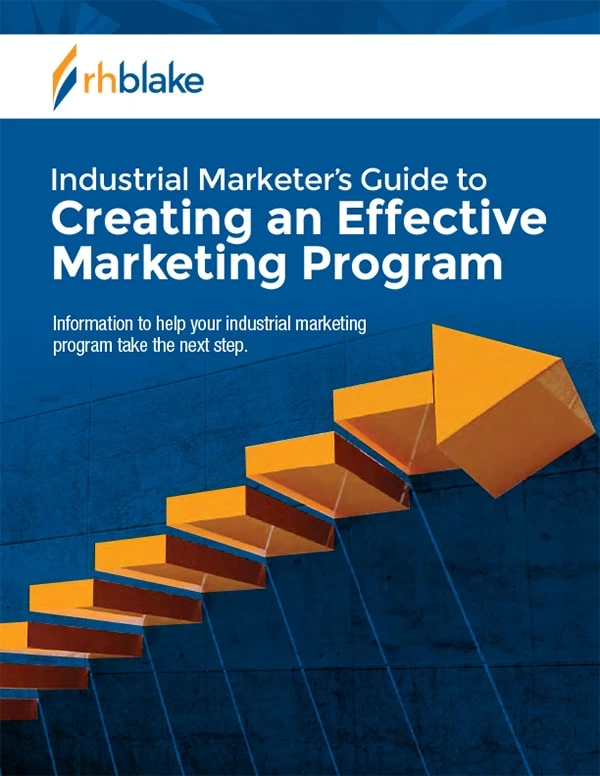
Industrial Marketer’s Guide to Creating an Effective Marketing Program
147 pages of actionable ideas to help you create a winning marketing strategy and program

Industrial Marketer’s Guide to Creating an Effective Marketing Program
147 pages of actionable ideas to help you create a winning marketing strategy and program
Related Clients


